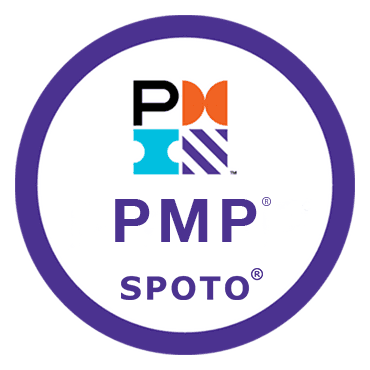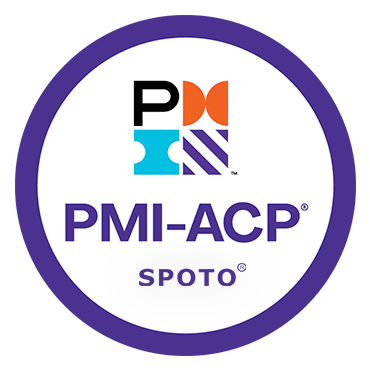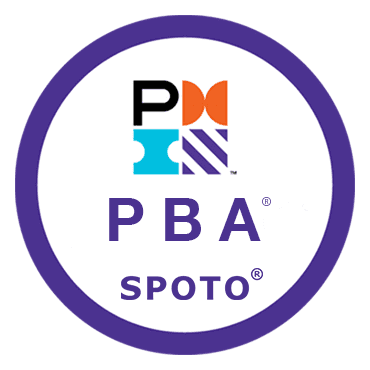The Project Management Professional (PMP)® certification, offered by the Project Management Institute (PMI)®, is a globally recognized and highly respected credential for project managers. While the exam itself is rigorous, the journey to certification begins long before test day—it starts with a meticulous and accurate application process. This guide provides an expert-level, step-by-step walkthrough to help aspiring professionals navigate the PMP exam application with confidence, from verifying eligibility to scheduling the test.
To sign up for the PMP exam, a candidate must first meet specific eligibility criteria, including a combination of academic education, documented project management experience, and formal project management education. The process involves completing a detailed online application on the official PMI website, PMI.org.1 Once the application is approved, the candidate pays the required exam fee and can then schedule their exam appointment through the designated testing provider, Pearson VUE.3
Successfully navigating the PMP application is a project in itself. Just as with any project, careful planning and attention to detail are critical to a smooth and successful outcome. By understanding each phase of the process and proactively preparing the necessary documentation, a candidate can avoid common pitfalls and ensure a seamless transition from applicant to a certified professional.
Successfully navigating the PMP exam application is a project in itself, and a meticulous, fact-based approach is key to avoiding common pitfalls and ensuring a smooth journey toward certification.
Table of Contents
What Are the Official PMP Exam Eligibility Requirements?
Before beginning the online application, the most critical first step is to confirm that a candidate meets the PMP certification requirements set by PMI. These prerequisites are designed to ensure that candidates possess the necessary academic and real-world experience to lead projects.2 The specific requirements vary depending on the candidate’s highest level of academic education.
PMP eligibility is founded on a combination of academic education, documented project management experience, and 35 contact hours of project management education. A candidate with a four-year degree is required to have 36 months of non-overlapping project experience, while a candidate with a secondary degree needs 60 months of experience.2
The PMP eligibility criteria serve as a foundational pillar of the certification’s value, confirming that successful candidates have a proven track record. The process involves a thorough verification of a candidate’s background to maintain the credential’s integrity.5 This section breaks down the two primary eligibility pathways and clarifies the nuanced details that applicants often overlook.
- Detailed Breakdown of Eligibility Pathways:
- Four-Year Degree Pathway (Set B): This is the most common path and requires a bachelor’s degree or its global equivalent. The experience requirement is a minimum of 36 months of non-overlapping, professional experience leading and managing projects within the last eight years.2 In addition, applicants must have 35 contact hours of project management education or possess a Certified Associate in Project Management (CAPM)® certification.2
- Secondary Degree Pathway (Set A): For those with a high school diploma, associate’s degree, or a global equivalent, the experience requirement is a minimum of 60 months of non-overlapping, professional experience leading and managing projects within the last eight years.2 The requirement for 35 contact hours of project management education or a CAPM® certification remains the same.2
- GAC-Accredited Program Pathway (Set C): A less common but important third pathway exists for those with a bachelor’s degree from a Global Accreditation Center (GAC) accredited program. These candidates only need 24 months of project management experience, as the GAC core coursework is pre-approved to fulfill the 35 education hours.3
- Clarifying Nuances of the Experience Requirement:
- Non-Overlapping Experience: The requirement for “non-overlapping” experience is a crucial detail that is often misunderstood.8 If a candidate worked on two projects simultaneously for a year, PMI counts this as 12 months of experience, not 24 months. This nuance underscores that PMI values sustained, longitudinal experience over a raw count of hours worked.8
- Leading and Directing Projects: The research clearly states that the PMP certification does not require a candidate to hold the job title “Project Manager”.2 The focus is on the
role a candidate played. A candidate must demonstrate that they were responsible for tasks across the five project management process areas: Initiating, Planning, Executing, Monitoring and Controlling, and Closing.10 This is a key point for professionals with titles such as “Engineer,” “Business Analyst,” or “Consultant” who have been leading projects.
The research material contains what appears to be contradictory information regarding the experience requirement, with some sources mentioning specific hours (e.g., 4,500/7,500 hours) while others state they are “no longer required” and focus on months (e.g., 36/60 months).2 This discrepancy points to a recent and significant change in PMI’s policy. The previous requirement of calculating a total number of hours was often a source of confusion and led applicants to treat the application as a timesheet. The new, simpler focus on “non-overlapping months” represents a strategic shift by PMI, which is placing a greater emphasis on the
breadth and duration of a candidate’s sustained leadership experience over a precise, cumulative hour count. The core value is not how many hours were worked, but that a candidate has demonstrated consistent, professional project leadership over a defined period. This makes the application process more qualitative and narrative-focused.
While the user query is about the relatively simple task of “signing up,” the depth of the eligibility requirements and the need for detailed documentation suggest the application itself is a form of self-assessment and preparation. PMI’s stringent requirements, particularly the need to document experience and education meticulously, compel candidates to formally organize their professional history. This initial phase acts as a de facto preparatory step. By systematically documenting their experience, applicants are essentially studying the PMP framework and reinforcing their knowledge of key concepts like process groups.10 This process weeds out ineligible candidates and ensures those who move forward are already deeply engaged with the principles they will be tested on.
Table 1: PMP Eligibility Requirements by Educational Background
| Eligibility Requirement | Four-Year Degree Pathway | Secondary Degree Pathway |
| Academic Education | Bachelor’s Degree or higher | High School Diploma, Associate’s Degree, or equivalent |
| Project Management Experience | Minimum 36 months leading projects (non-overlapping) | Minimum 60 months leading projects (non-overlapping) |
| PM Education | 35 contact hours of project management education or CAPM® Certification | 35 contact hours of project management education or CAPM® Certification |
| Experience Window | Must be earned within the last 8 years | Must be earned within the last 8 years |
The PMP certification is accessible to professionals with diverse educational backgrounds, provided they can meticulously document their relevant, non-overlapping project leadership experience and education.
How Do You Navigate the PMP Exam Online Application?
Once a candidate has confirmed their eligibility, the next step is to tackle the online application form on the PMI.org website. This is more than just a data entry task; it’s a critical opportunity to present a candidate’s professional experience in a way that aligns with PMI’s framework. A thorough and thoughtful approach at this stage can prevent delays and set the foundation for a successful certification journey.
The PMP online application requires a candidate to detail their personal information, educational background, and a comprehensive summary of their project management experience, focusing on their specific role and responsibilities. The application is a “save-as-you-go” process, allowing a candidate to work on it over time.3
The online application is a candidate’s formal introduction to PMI. It is designed to verify their claims and ensure they are a qualified candidate. The process is broken down into three main sections, each requiring careful attention to detail.
- Step-by-Step Walkthrough of the Online Application:
- Create a PMI.org Account: Before anything else, a candidate must create a free user account on the PMI website. This account is the candidate’s hub for the entire process—it is used to access the application, check its status, and manage the certification later.9
- Access the Application: A candidate must log in to their PMI account, navigate to the “Certifications” section, and click on “Apply Now” for the PMP certification.3
- Complete Personal Information: The first section requires basic contact details, including a candidate’s full name, email, and address. It is crucial to ensure the name entered matches the name on a candidate’s government-issued ID exactly, as this is required for the exam check-in.14
- Enter Educational Background: This section is straightforward. A candidate will enter their highest academic degree, the name of the institution, field of study, and dates attended.12
- Document Project Management Education: This is where a candidate provides details for their 35 contact hours of training. A candidate must list the name of the training provider, the course title, and the number of hours completed. This education must be complete before the application is submitted.7
- Detail Project Management Experience: This is the most extensive and crucial section. For each project, a candidate must provide the project title, organization, their job title and functional area, the project dates, team size, and budget. Crucially, a candidate must provide a detailed project description summarizing their specific role and responsibilities.9 PMI advises that typical responses range from 200 to 500 words.14
- Crafting Compelling Project Descriptions:
- Focus on Your Role, Not the Project: The description should highlight a candidate’s responsibilities and efforts in leading and directing the project, not just what the project accomplished.3
- Align with Process Areas: A candidate should structure their description to reflect their involvement in the five project management process areas: Initiating, Planning, Executing, Monitoring and Controlling, and Closing.10 This demonstrates a candidate’s comprehensive experience across the project lifecycle.
- Proactive Planning: It is highly recommended to draft and review project descriptions in a separate document (e.g., a Word file or spreadsheet) before entering them into the online form. This allows a candidate to check for word count, consistency, and accuracy, and to get feedback from former managers or peers, which is a proactive step for audit preparedness.15
The prevalence of common application mistakes—incomplete information, inaccurate dates, and insufficient descriptions 12—indicates that many applicants rush through this process. The PMI online form, with its “save-as-you-go” functionality, is designed to counteract this behavior. This feature is not just a convenience; it is a subtle quality control measure by PMI. It allows candidates to step away, gather more information, and thoughtfully craft their responses. The correlation between common mistakes and a rushed application process suggests that taking advantage of this feature and treating the application as a formal, documented project is a direct path to approval and a way to avoid delays or rejections.
Table 2: Essential Documents & Information for Your PMP Application
| Category | Specific Items to Gather |
| Personal Information | – Full legal name (as it appears on ID) – Contact details (address, phone, email) |
| Academic Education | – Name of all relevant institutions – Degree(s) earned and dates granted |
| Project Management Education | – Name of training provider(s) – Course title(s) and completion date(s) – Total contact hours for each course (must total ≥ 35) |
| Project Management Experience | – Detailed list of projects (non-overlapping) – Project title, organization, dates, and budget (in USD) – Your job title, functional area, and team size – Detailed project description (200-500 words) for each project |
A thorough and detail-oriented approach to completing the online application form is critical to securing PMI’s approval and advancing to the next stage of certification.
What Should You Do If Your PMP Application Is Audited?
After an application is submitted, it will undergo a review process that typically takes about five to ten business days.11 During this period, a small, random percentage of applications are selected for an audit.5 While this prospect can seem intimidating, it is a standard procedure designed to uphold the integrity and high quality of the PMP credential.6 Being prepared for a potential audit is the key to a stress-free experience.
A PMP application audit is a random verification process by PMI to confirm the accuracy of a candidate’s submitted experience and education. If selected, a candidate will have 90 days to mail an audit package containing copies of their degrees, project management education certificates, and supervisor-signed experience verification forms.5
The audit is not a penalty; it is a quality assurance measure. Understanding what PMI is looking for and having documents ready from the outset can turn a potentially stressful situation into a minor administrative task.
- The Purpose and Random Nature of the Audit:
- Audits are conducted to verify that applicants meet the eligibility criteria and to maintain the integrity of the PMP credential.5
- PMI randomly selects applications for an audit, meaning a candidate cannot take steps to “avoid” it.15 However, a meticulously completed application with accurate dates and detailed descriptions can help ensure a smooth audit process if a candidate is selected.6
- Comprehensive Guide to the Audit Process:
- Notification: If an application is selected, the candidate will receive an email notification with instructions.5 The one-year exam eligibility period does
not begin until the candidate has successfully passed the audit.5 - Gather Required Documents: The email will prompt the candidate to download the audit package from the PMI Online Certification System. The candidate must gather and prepare the following:
- Academic Education: A copy of the candidate’s degree, diploma, or transcript.5
- Project Management Education: Copies of the certificate(s) of completion for the 35 contact hours of training.5
- Project Management Experience: A physical form for each project listed, which must be signed by the candidate’s supervisor or manager.5 The candidate must not have them sign a blank form; the project details should be filled in beforehand.5
- Submission: All documents must be mailed to PMI in a single envelope via postal mail or courier. PMI explicitly states that it will not accept faxed or emailed documents.5 A candidate has 90 days from the notification date to submit this package.6
The research repeatedly emphasizes the importance of keeping detailed records and having contact information for references.12 Additionally, applicants are advised to contact their supervisors
before submitting the application to ensure they are comfortable with the descriptions and willing to sign off if an audit occurs.15 This “begin with the end in mind” approach is a direct and actionable response to the audit risk. By preparing for a potential audit from the very beginning of the application process, an applicant can significantly reduce the risk of a failed audit due to uncooperative references or lost documentation. This strategic, long-term thinking is a hallmark of a good project manager and is an important consideration for applicants.
While the PMP application audit is a random process, maintaining meticulous documentation of a candidate’s education and experience ensures they are prepared to demonstrate their eligibility without delay.
How Do You Pay for and Schedule Your PMP Exam?
After the successful submission and review of an application, a candidate will receive an email notification of their approval and an eligibility ID. This is the green light to proceed to the final two stages of the sign-up process: paying the exam fee and scheduling the test. This section outlines the financial and logistical steps to bring a candidate’s journey to the PMP exam to a confident close.
The PMP exam fee is paid after a candidate’s application is approved. PMI membership offers a substantial discount, making it a cost-effective choice.3 The exam can be scheduled online or at a physical test center through Pearson VUE, which offers flexible dates and times.4
Finalizing a candidate’s registration involves a few key decisions, from optimizing the cost to choosing the best testing format.
- Understanding the PMP Exam Cost:
- PMI Membership vs. Non-Member Pricing: The cost of the PMP exam is a significant financial investment. For non-members, the exam fee is $655.3 However, PMI members pay a discounted rate of $405.3
- The Financial Case for Membership: The annual PMI membership fee is $129.9 By becoming a member, a candidate saves $250 on the exam fee alone, which more than offsets the cost of membership. The discount is so substantial that it is financially illogical not to become a member before paying for the exam, even if a candidate does not plan to renew the membership later.9
- Step-by-Step Exam Scheduling Guide:
- Receive Your Eligibility ID: Upon approval and payment, PMI will provide a candidate with a unique eligibility ID.4 This ID is essential for scheduling the exam.
- Access the Scheduling Portal: A candidate must log in to their PMI account and navigate to the “Review Application Status” section under “myPMI.” From there, a candidate can click “Schedule Exam,” which will redirect them to the Pearson VUE website.4
- Choose Your Test Format: A candidate has the option to take the exam at a Pearson VUE Testing Center or securely online with a proctor.4
- Test Center: This is a recommended option, providing a controlled environment free from distractions. A candidate can select a location, date, and time that works for them.4
- Online Proctored Exam: This offers convenience and flexibility, allowing a candidate to take the exam from home. However, a candidate must ensure their computer meets all system requirements by running a pre-test check to avoid issues on exam day.4
- Complete the Scheduling: A candidate selects their preferred language, date, and time. They will receive a confirmation email from Pearson VUE once the appointment is finalized.17
The research highlights a clear financial benefit to becoming a PMI member before paying for the exam.3 This is a direct cause-and-effect relationship. Furthermore, the one-year eligibility period to take the exam
after application approval 2 creates a strategic timing dilemma for many candidates. Applicants should not rush to submit their application until they are confident they can pass the exam within the one-year window, especially since there is a fee for rescheduling or canceling within 30 days of the appointment.4 The ability to attempt the exam up to three times within that year 3 provides a safety net, but it underscores the importance of a solid study plan. The financial and time-based factors are deeply intertwined, requiring a strategic approach to payment and scheduling.
Table 3: PMP Exam Cost Breakdown (Member vs. Non-Member)
| Fee Type | Non-Member Price | PMI Member Price | Cost Difference |
| PMP Exam Fee | $655 | $405 | $250 |
| PMI Annual Membership | – | $129 | – |
| Total Cost | $655 | $534 | $121 |
| Total Savings with Membership | – | $121 | – |
After securing application approval, a strategic payment and scheduling plan ensures a candidate can confidently proceed to take the exam within the one-year eligibility period.
Conclusion
The PMP exam is a significant milestone for project management professionals, but it is the diligent preparation and meticulous execution of the application process that sets the stage for success. By first confirming eligibility, then carefully completing the detailed online application, and finally, strategically managing the payment and scheduling steps, a candidate demonstrates the very skills that the PMP credential seeks to validate. The journey to certification is a project in its own right, and with a fact-based, organized approach, a candidate can confidently take the first and most critical step toward earning their PMP.
External Links Recommendations
- Project Management Institute (PMI) PMP Certification Page: The definitive source for official requirements, application links, and exam details.3
- PMI Certification Resources FAQ: A comprehensive resource for common questions on eligibility, audits, and exam logistics.19
- Pearson VUE Scheduling Portal: The official site for scheduling PMP exams, with detailed information on test centers and online proctoring.4
- PM PrepCast Forum: A community resource offering peer-to-peer advice and tips on navigating the PMP application and exam.15
- Project Management Academy Blog: Provides professional tips and insights, particularly on avoiding common application mistakes.12
Reference links:
- How to Apply for the PMP® Exam in 12 Easy Steps – Simplilearn.com, https://www.simplilearn.com/steps-to-apply-for-pmp-exam-article
- PMP Certification Requirements 2025: Eligibility, Process, & Exam Guide, https://www.4pmti.com/pmp-certification-requirements/
- Project Management Professional (PMP)® Certification | PMI, https://www.pmi.org/certifications/project-management-pmp
- Exam Scheduling Instructions for Pearson VUE Testing – PMI,https://www.pmi.org/update-center/-/media/pmi/documents/public/pdf/certifications/exam-schedule-pearson-vue.pdf
- Pass The PMP Audit : A Step-by-Step Guide – Gururo, https://gururo.com/pass-the-pmp-audit-a-step-by-step-guide/
- PMP Audit Process: A Step-by-Step Guide! [2024 Updated], https://www.knowledgehut.com/blog/project-management/pmp-audit-process
- PMP Eligibility And Requirements in 2025-26 – StarAgile, https://staragile.com/info/project-management/pmp-certification-eligibility
- Do You Qualify for the PMP® Certification? – Project Management Academy, https://projectmanagementacademy.net/articles/qualify-for-pmp/
- How Do I Register for the PMP Exam? | The Persimmon Group, https://thepersimmongroup.com/pmp-certification/how-do-i-register-for-the-pmp-exam/
- Things to Consider when Applying for PMP | PMI, https://www.pmi.org/-/media/pmi/documents/public/pdf/certifications/application-tips.pdf
- PMP Application Review Process – KnowledgeMap, https://knowledgemap.pm/certifications/pmp-application-review/
- How to Successfully Complete Your PMP Application – Project Management Academy,https://projectmanagementacademy.net/resources/blog/pmp-application/
- Home of Project Management | Project Management Institute, https://www.pmi.org/
- Learn the Steps on How to Fill in Your PMP® Application, https://www.project-management-prepcast.com/how-to-fill-in-the-pmp-application
- Tips for the PMP application – PM PrepCast Forum, https://www.project-management-prepcast.com/kunena/pmp-exam-discussion/13899-tips-for-the-pmp-application
- PMP Application Process – 1st Choice Project Management Training, https://www.1stchoicepmtraining.com/pmp-applications-process/
- PMP Exam Schedule for 2025: Check PMP Exam Date – KnowledgeHut, https://www.knowledgehut.com/blog/project-management/pmp-exam-schedule
- How Much Does The PMP Exam Cost in 2025?, https://crushthepmexam.com/pmp-exam-cost/
- PMI Certifications Frequently Asked Questions | PMI, https://www.pmi.org/certifications/certification-resources/faq









Comments